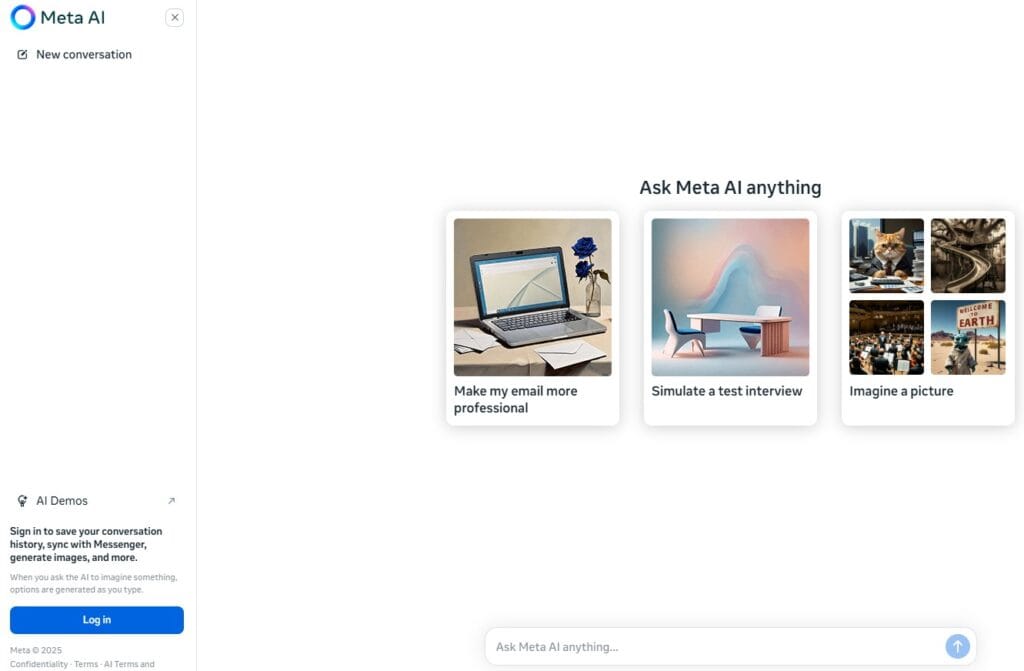Meta AI’s evolution, features, and impact on social platforms. Learn how this AI integrates into daily interactions, its advantages over competitors, and future trends.
Introduction: The Rise of Meta AI in Social Connectivity
In an era where artificial intelligence (AI) reshapes digital experiences, Meta AI stands out as a transformative force embedded within the fabric of social interactions. Developed by Meta (formerly Facebook), this AI suite powers features across Facebook, Instagram, WhatsApp, and Messenger, blending seamlessly into daily communication while advancing capabilities in content creation, real-time translation, and personalized assistance. This comprehensive guide explores Meta AI’s definition, historical milestones, technical innovations, applications, and competitive edge, positioning it as a leader in socially integrated AI.
What is Meta AI?
Meta AI is a suite of artificial intelligence tools designed to enhance user experiences across Meta’s social platforms. Unlike standalone AI assistants, it operates contextually within apps, offering features like image editing, multilingual chat support, and AI-generated content. Built on advanced large language models (LLMs) such as Llama 3.3, Meta AI emphasizes:
- Multimodal Capabilities: Processes text, images, and voice inputs.
- Social Integration: Functions within chats, feeds, and AR/VR environments.
- Ethical Design: Adheres to transparency guidelines, labeling AI-generated content 38.

Historical Development: From Research Lab to Social Staple
Meta AI’s journey reflects Meta’s vision of ubiquitous AI integration:
- 2015: Launched as Facebook AI Research (FAIR), focusing on machine learning and metaverse development.
- 2021: Rebranded to Meta AI post-Facebook’s corporate renaming, aligning with metaverse ambitions 3.
- 2023: Rolled out AI Studio, enabling businesses to create custom chatbots, and introduced Llama 3.3, a 70B-parameter model optimized for text tasks 38.
- 2024: Integrated Claude 3.5 Sonnet (via Anthropic partnership) for enhanced reasoning and launched real-time translation in Ray-Ban Meta glasses 34.
- 2025: Expanded AI-generated video dubbing in Reels and voice customization with celebrity voices like John Cena 3.
Today, Meta AI serves over 400 million monthly users, with 4 million advertisers leveraging its tools for campaigns 4.
New Features and Technical Innovations
Meta AI continually evolves to meet user and marketer demands:
- Live Translation in Ray-Ban Glasses
- Translates Spanish, French, and Italian speech in real-time during conversations 3.
- Multimodal Content Creation
- Generates images, videos, and text posts via prompts (e.g., “@Meta AI, create a birthday reel”) 3.
- AI Studio for Businesses
- Custom chatbots for customer service and marketing, with AI-generated replies clearly labeled 3.
- Voice Mode with Celebrity Voices
- Optional voices like Kristen Bell for personalized interactions 3.
- Enhanced Privacy Controls
- “Incognito Mode” for searches and end-to-end encryption in WhatsApp AI chats 8.
How Meta AI Works: Technology Under the Hood
- Foundation Models
- Llama 3.3: A 70B-parameter LLM powering text generation and analysis. Optimized for mobile devices and wearables 3.
- Multimodal Integration: Combines vision, speech, and text models for tasks like analyzing uploaded photos 6.
- Data Processing
- Trained on ethically sourced public data, with safeguards to reduce biases 8.
- Real-Time Deployment
- Runs on Meta’s infrastructure, enabling instant responses in chats and AR glasses 3.
What Can Meta AI Do? Applications Across Industries
- Social Media Management
- Automates post drafting, hashtag suggestions, and audience engagement analysis 4.
- E-Commerce
- Powers personalized product recommendations and AI-driven ad targeting 4.
- Content Creation
- Generates Reels with automated lip-syncing and translates videos into multiple languages 3.
- Customer Support
- Deploys AI chatbots in Messenger and WhatsApp to resolve queries 24/7 3.
- Augmented Reality
- Enhances Ray-Ban glasses with object recognition (e.g., identifying landmarks) 3.
Advantages of Meta AI
- Seamless Platform Integration
- Embedded natively in apps users already frequent, reducing adoption friction 3.
- Multilingual Support
- Operates in 21 countries, supporting languages from Hindi to Spanish 3.
- Cost Efficiency
- Free for consumers; enterprise tools like AI Studio start at scalable pricing tiers 4.
- Ethical Transparency
- Labels AI-generated content and avoids EU data privacy conflicts through selective rollout 38.
Meta AI vs. Competitors: A Comparative Analysis
| Feature | Meta AI | Google Gemini | ChatGPT |
|---|---|---|---|
| Primary Focus | Social interaction, AR/VR | Productivity, search | General-purpose creativity |
| Integration | Native in Meta apps, Ray-Ban glasses | Android, Workspace | Third-party plugins |
| Multimodality | Text, image, voice, AR | Text, image (Gemini Advanced) | Text, image (GPT-4o) |
| Privacy Controls | Incognito mode, encrypted chats | Basic anonymization | Limited |
| Accessibility | Free in 21 countries | $20/month Gemini Advanced | Free + paid tiers |
Why Meta AI Stands Out:
- Social Context: Excels in enhancing interactions (e.g., group chat assistance) versus Gemini’s search-centric design 36.
- Hardware Synergy: Ray-Ban glasses offer unique hands-free AI utility unmatched by competitors 3.
Future Outlook: AI as a Social Catalyst
Meta plans to:
- Expand AI Agents
- Develop Project Astra for personalized, memory-enabled assistants 6.
- Strengthen AR Ecosystem
- Launch Orion holographic glasses for immersive metaverse experiences 3.
- Global Compliance
- Adapt to EU AI Act requirements for broader regional access 3.
Conclusion: Redefining Social Connectivity with Meta AI
Meta AI reimagines how users interact with technology, blending AI into everyday social exchanges while prioritizing accessibility and ethical design. Its strength lies in contextual integration—whether drafting a Instagram caption or translating a conversation via smart glasses—making AI feel less like a tool and more like a natural extension of human communication. As Meta continues to innovate, its focus on multimodal, socially embedded AI positions it as a cornerstone of the next digital revolution.



Leave a Reply